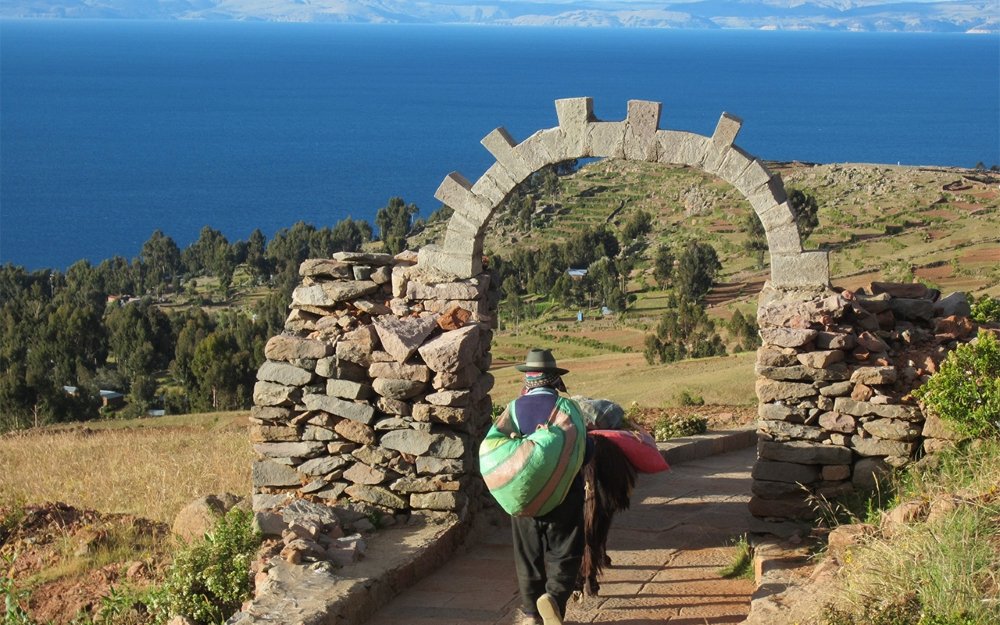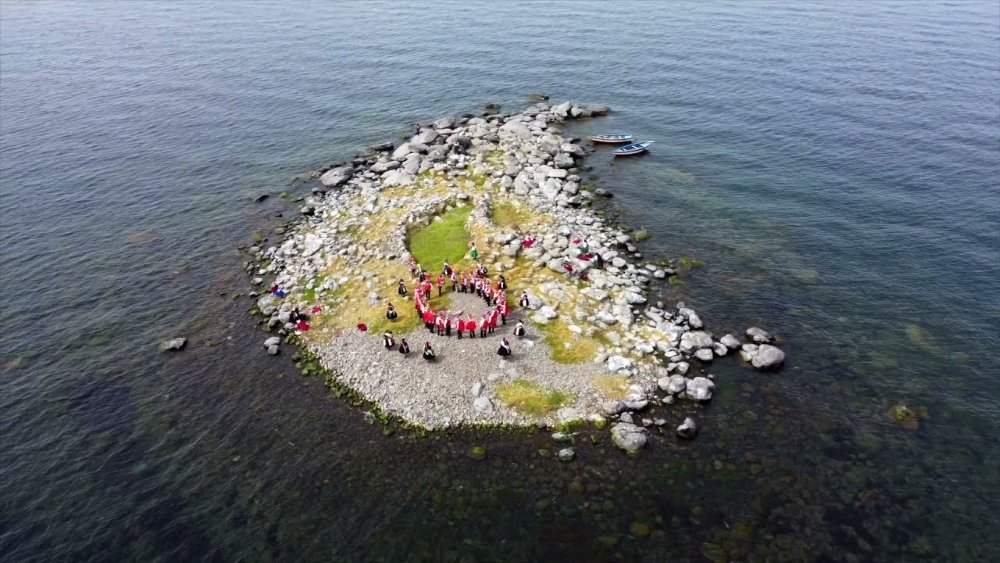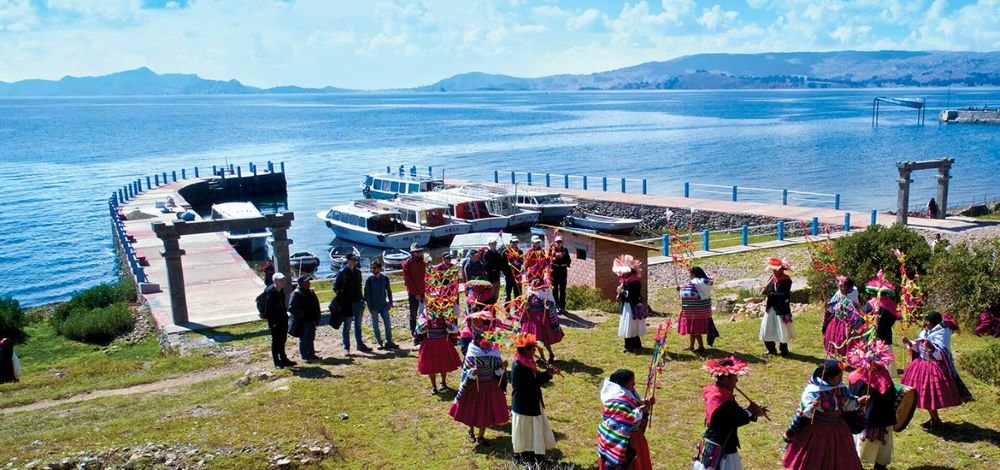Amantani Island | Puno
The meaning of “Amantani” comes from the Quechua language, spoken by many of the inhabitants of the region. In Quechua, “Aman” means “island” and “Tani” can have several possible meanings depending on the context, but one of the common meanings is “to live”. Therefore, “Amantani” could be interpreted as “island to live on” or “habitable island”. This name could reflect the idea that the island is a place where people live and thrive, despite being located in a sometimes challenging natural environment, such as an island in the middle of a lake.
Isla Amantani is located in Lake Titicaca, which is in the Andean region of South America, shared by Peru and Bolivia. Specifically, Amantani Island belongs to the Peruvian side of the lake. Lake Titicaca is one of the highest and largest lakes in the world and is known for its scenic beauty and its cultural and historical importance to the indigenous populations that surround it.
history of Amantani Island | Puno
The history of Isla Amantani dates back to ancient times and is intertwined with the rich culture of the civilizations that have inhabited the Lake Titicaca region over millennia. Here’s an overview of some highlights of its history:
- Pre-Inca Civilizations: The area around Lake Titicaca has been inhabited by pre-Columbian civilizations for thousands of years. Before the arrival of the Incas, peoples such as the Tiwanaku and Pucará left their mark on the region.
- Inca Period: During the height of the Inca Empire, Lake Titicaca and its islands had significant cultural and religious importance. It is believed that Isla Amantani was inhabited by the Quechua people, who lived in the region before and during the Inca period.
- Spanish Colonization: With the arrival of the Spanish in the 16th century, the Lake Titicaca region was colonized and subjected to Spanish rule. The Spanish conquest had a significant impact on the culture and society of the area, although many indigenous traditions and customs persisted.
- Modern Era: After Peru’s independence in the 19th century, the Lake Titicaca region underwent political, social, and economic changes. Isla Amantani, like other islands in the lake, maintained its traditional way of life, with an economy based on agriculture and tourism.
- Contemporary Tourism: In recent times, Isla Amantani has attracted tourists seeking authentic experiences and contact with the local culture. Many visitors choose to stay on the island in family-run accommodations and participate in cultural activities such as traditional dances and visits to archaeological sites.
The history of Isla Amantani is an integral part of the broader history of the Lake Titicaca region and reflects the rich cultural diversity and legacy of the civilizations that have inhabited this area over time.

What to see in Amantani Island?
How to get to Amantani Island?
To reach Isla Amantani, you first need to get to Puno, a city located on the Peruvian shore of Lake Titicaca. From Puno, there are two main options to get to Isla Amantani:
- By Boat from the Port of Puno: The most common way to reach Isla Amantani is by taking a boat from the port of Puno. Boats depart daily to the islands of Lake Titicaca, including Isla Amantani. The boat journey can take between 3 and 4 hours, depending on weather conditions and the lake.
- Through an Organized Tour: Many travel agencies in Puno offer organized tours that include visits to the islands of Lake Titicaca, such as Isla Amantani. These tours typically include transportation by boat from Puno as well as a stay on the island with a local family, meals, and cultural activities.
Once on Isla Amantani, you can explore the island on foot and participate in cultural activities organized by the local residents. Some people choose to stay overnight on the island in family-run accommodations for a more authentic and extended experience.

Recommendations to visit the Amantani Island
If you’re planning to visit Isla Amantani, here are some recommendations to ensure you have a more enjoyable and enriching experience:
- Respect for Local Culture: Respect the culture and customs of the island’s inhabitants. Learn about their way of life, traditions, and cultural practices, and be respectful when interacting with them.
- Accommodation with Local Families: Consider staying in accommodations managed by local families rather than conventional hotels. This is an excellent way to immerse yourself in the daily life of the island’s inhabitants and directly support the local community.
- Appropriate Clothing and Gear: Be prepared for abrupt weather changes, as the weather on Lake Titicaca can be unpredictable. Bring warm and waterproof clothing, especially if you’re visiting the island during the rainy season.
- Water and Food: Carry enough drinking water and some non-perishable food, especially if you have specific dietary restrictions. Although many families offer meals to visitors, it’s advisable to have some extra food and water just in case.
- Hiking and Exploration: Explore the island on foot and enjoy its beautiful landscapes and panoramic views. Be prepared for moderate hikes, as the island’s topography can be steep in some areas.
- Environmental Respect: Help preserve the island’s natural environment by following principles of sustainable tourism. Avoid leaving litter in the landscape and respect the local flora and fauna during your explorations.
- Cultural Interaction: Seize the opportunity to interact with local residents and participate in cultural activities such as traditional dances or ritual ceremonies. This will allow you to have a more authentic and meaningful experience on the island.
By following these recommendations, you’ll be able to make the most of your visit to Isla Amantani and positively contribute to the well-being of the local community.












